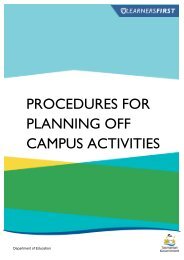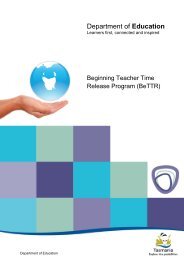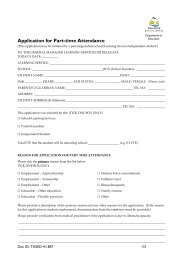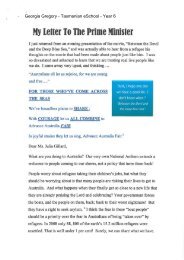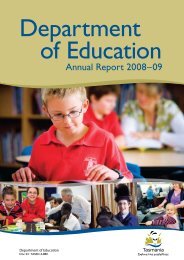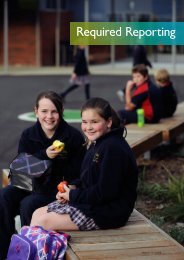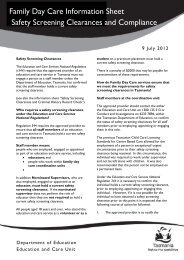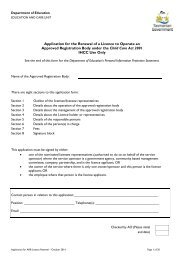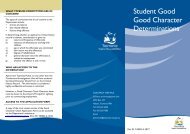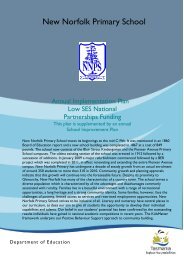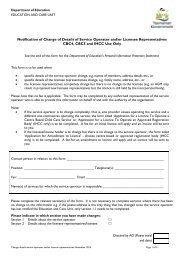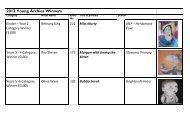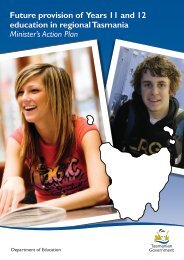Tas Curriculum K-10 - Languages - Italian - Department of Education
Tas Curriculum K-10 - Languages - Italian - Department of Education
Tas Curriculum K-10 - Languages - Italian - Department of Education
Create successful ePaper yourself
Turn your PDF publications into a flip-book with our unique Google optimized e-Paper software.
Thinking<br />
Communicating in another language requires a broad range <strong>of</strong> thinking strategies, including classifying,<br />
predicting, analysing and applying language rules. Students develop ways <strong>of</strong> thinking about and describing<br />
language use. As students use and experience different languages and cultural practices, they reflect on their<br />
learning and are challenged to consider their own identities and perspectives. They gain new ways <strong>of</strong><br />
thinking about their place in the world.<br />
Intercultural language learning<br />
Intercultural language learning is a way <strong>of</strong> understanding the relationship between language and culture and<br />
how to use that knowledge in communicating across cultures. Intercultural language learning helps learners<br />
to know and understand the world around them from multiple perspectives and to learn about themselves<br />
through language learning. It requires learners to adopt an inquisitive mind, to notice and question<br />
assumptions and to rethink how they relate to others.<br />
Core content strands<br />
<strong>Languages</strong> (LOTE) is organised into three interrelated strands:<br />
• communication<br />
• language as a system<br />
• language and culture.<br />
Communicating is the central focus <strong>of</strong> language learning. The learning that takes place in the language as a<br />
system and language and culture strands enables students to develop the knowledge and skills that they<br />
need to communicate more effectively. The relative emphasis given to each strand in teaching programs will<br />
vary according to the specific language and the needs <strong>of</strong> students.<br />
1. Communication<br />
Students use their increasing knowledge <strong>of</strong> language and culture to communicate effectively,<br />
confidently and responsibly. They use the macro skills <strong>of</strong> listening, speaking, reading and<br />
writing.<br />
2. Language as a system<br />
Students learn to identify, explain, apply, and compare language features, conventions and<br />
patterns and to understand languages as systems. They articulate what they discover about the<br />
similarities between their first and second languages. These skills and understandings support<br />
their English literacy skills and provide a foundation for future learning.<br />
3. Language and culture<br />
Students learn to recognise, compare, apply, reflect on, and analyse cultural features,<br />
conventions, and patterns through language interactions. They identify and examine their own<br />
cultural values and develop an awareness <strong>of</strong> diverse cultural systems.<br />
Performance criteria<br />
Significant aspects <strong>of</strong> learning are described in detail in the learning opportunities within each <strong>of</strong> the<br />
following strands:<br />
• communication (listening, speaking, reading and writing)<br />
• language as a system<br />
• language and culture.<br />
A suggested scope and sequence for these performance criteria is described in this syllabus across five<br />
standards. Thinking and Using ICT are embedded.<br />
6



